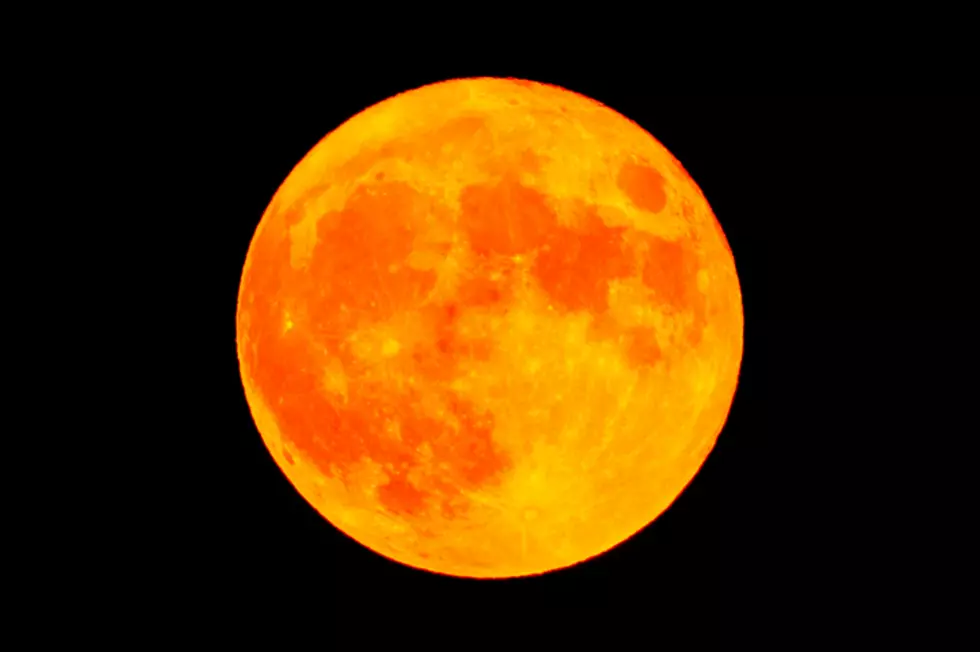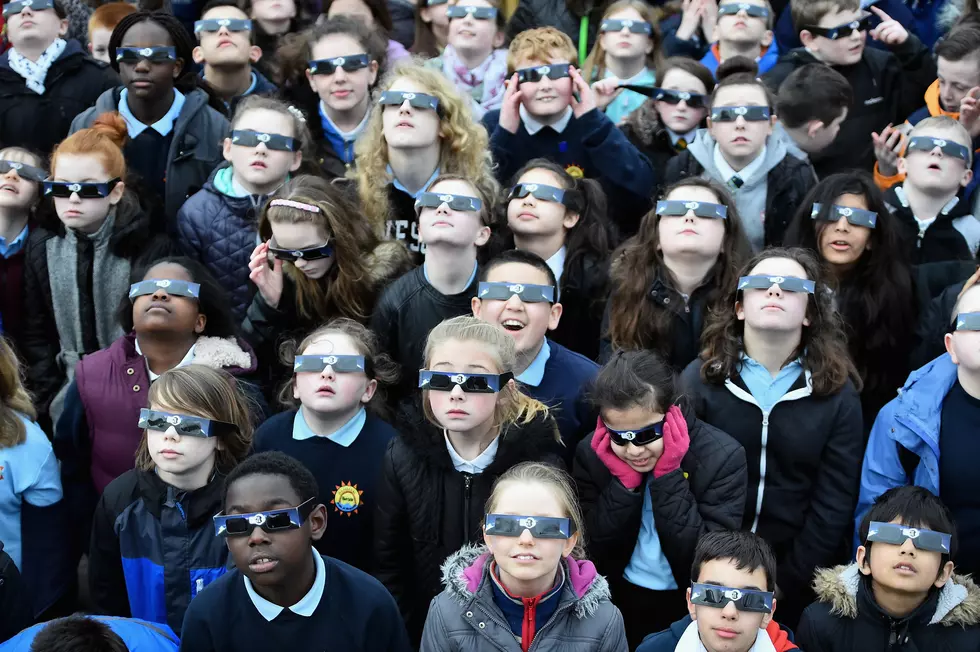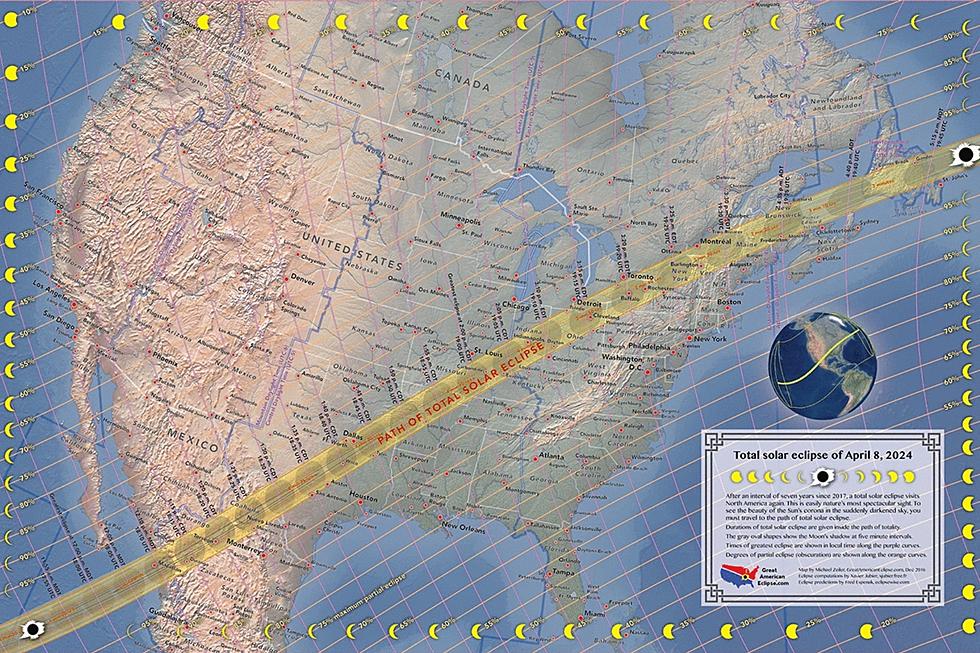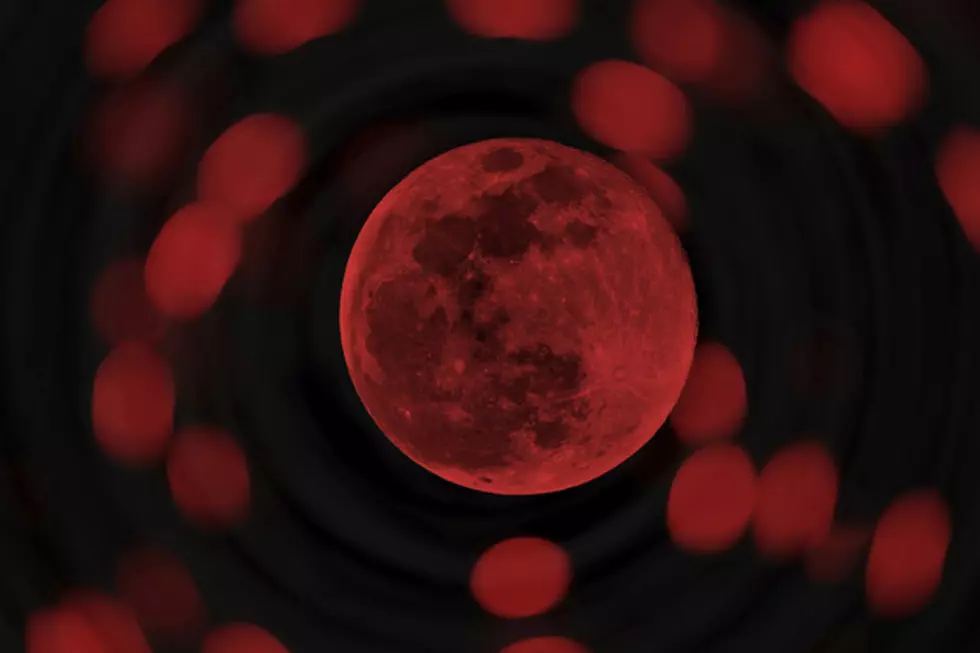
A Blood Moon Is Rising Over the SouthCoast on Sunday
Get ready for a total lunar eclipse that will turn the moon red on Sunday night, May 15.
The earliest phase starts at about 10:30 p.m., but the totality is at about 11:30 p.m., to around midnight. According to TimeandDate.com, the free show will last over one hour, for about 84 minutes – and you're in charge of the refreshments.
For the record, this event is "the longest prime eclipse this century!"

Unlike a solar eclipse, when the moon passes between the earth and the sun, Sunday/Monday's event is safe to look at with no eye protection because the bright sun will be at our backs. Simply go outside to any location that provides a good view of the nighttime sky.
People in North and South America, plus parts of Europe and Africa, will be viewing the concealment. Can't get outside to see it? NASA and many others will be streaming it online, showing views from around the world.
If you're asked why does the moon turn red during a lunar eclipse, you can explain that the three celestial bodies line up. From left to right, you've got the sun, then the Earth and then the moon.
Since it's nighttime here at 11:30 p.m., picture the sun shining directly on the other side of the earth, from us on the SouthCoast, creating a shadow that the moon passes through. If you were standing on the moon looking at Earth, our world would be silhouetted in a red halo, created by all the sun rises and sun sets occurring around the world at that time, and it's that red-orange blush color that's projected onto the moon making it appear the color of red wine.
That's also the origin of the term "blood moon." Depending on the amount of dust and volcanic ash there is in the air Sunday night, will determine whether it's more orange and gold or red.
If you miss this total lunar eclipse, no worries; there's another one that will be visible later this year, November 7 and 8.
Here's wishing you clear skies and wide eyes.
KEEP READING: Get answers to 51 of the most frequently asked weather questions...
LOOK: The most expensive weather and climate disasters in recent decades
More From WBSM-AM/AM 1420







![Michael Collins Took Us to the Moon and Back – Literally [OPINION]](http://townsquare.media/site/518/files/2021/04/GettyImages-1163007039.jpg?w=980&q=75)

